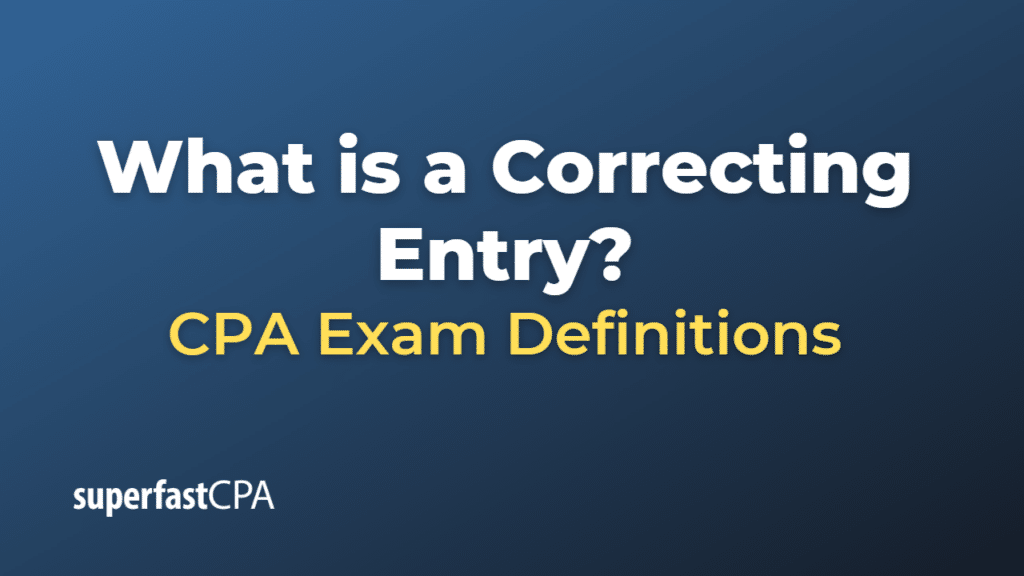Correcting Entry
A correcting entry is a journal entry made in an organization’s general ledger to rectify an error or mistake that was identified in a previously recorded transaction. Accounting errors can occur for various reasons, such as data entry mistakes, calculation errors, or the omission of a transaction. Correcting entries are essential to ensure that the organization’s financial records are accurate, consistent, and in compliance with accounting principles.
When a mistake is discovered, a correcting entry must be recorded to reverse the incorrect transaction and record the appropriate transaction accurately. The process usually involves the following steps:
- Identifying the error: The first step is to identify the specific error in the financial records, such as an incorrect amount, misclassification of an account, or a missing transaction.
- Determining the appropriate correcting entry: Once the error is identified, the accountant must determine the correct journal entry to rectify the mistake. This will involve analyzing the original transaction and determining the correct accounts and amounts to be debited or credited.
- Recording the correcting entry: The correcting entry is recorded in the general ledger, reversing the impact of the original incorrect entry and recording the correct transaction. The entry should include a description or note explaining the purpose of the correction, so it is clear to anyone reviewing the records why the entry was made.
- Adjusting financial statements (if necessary): If the error affected previously issued financial statements, the organization may need to adjust and reissue those statements to reflect the corrected information accurately.
It is important to note that correcting entries should be made as soon as the error is discovered to maintain the accuracy and integrity of the organization’s financial records. Regular reviews and reconciliations of accounts can help identify errors promptly and minimize their potential impact on financial reporting and decision-making.
Example of a Correcting Entry
Let’s consider an example where a correcting entry is needed to rectify an accounting error.
Imagine that XYZ Company, a small retail business, recorded the purchase of inventory worth $5,000 in their general ledger. However, they mistakenly debited the Office Supplies Expense account instead of the Inventory account. The journal entry was recorded as follows:
Date: 2023-05-01
Debit: Office Supplies Expense $5,000
Credit: Accounts Payable $5,000
Upon reviewing the transactions, the accountant discovers the error and determines that a correcting entry is required to rectify the mistake.
To correct the error, the accountant would need to reverse the impact of the incorrect entry and record the transaction correctly. The correcting entry would look like this:
Date: 2023-05-08
Debit: Inventory $5,000
Credit: Office Supplies Expense $5,000
With this correcting entry, the Inventory account is increased by $5,000 (the correct account for recording the purchase), and the Office Supplies Expense account is reduced by $5,000 (removing the incorrect transaction). The Accounts Payable account remains unchanged, as it was correctly credited in the original entry.
By making the correcting entry, the accountant ensures that XYZ Company’s financial records accurately reflect the purchase of inventory and that the Office Supplies Expense account is not overstated. This helps maintain the accuracy and integrity of the company’s financial statements and ensures compliance with accounting principles.













